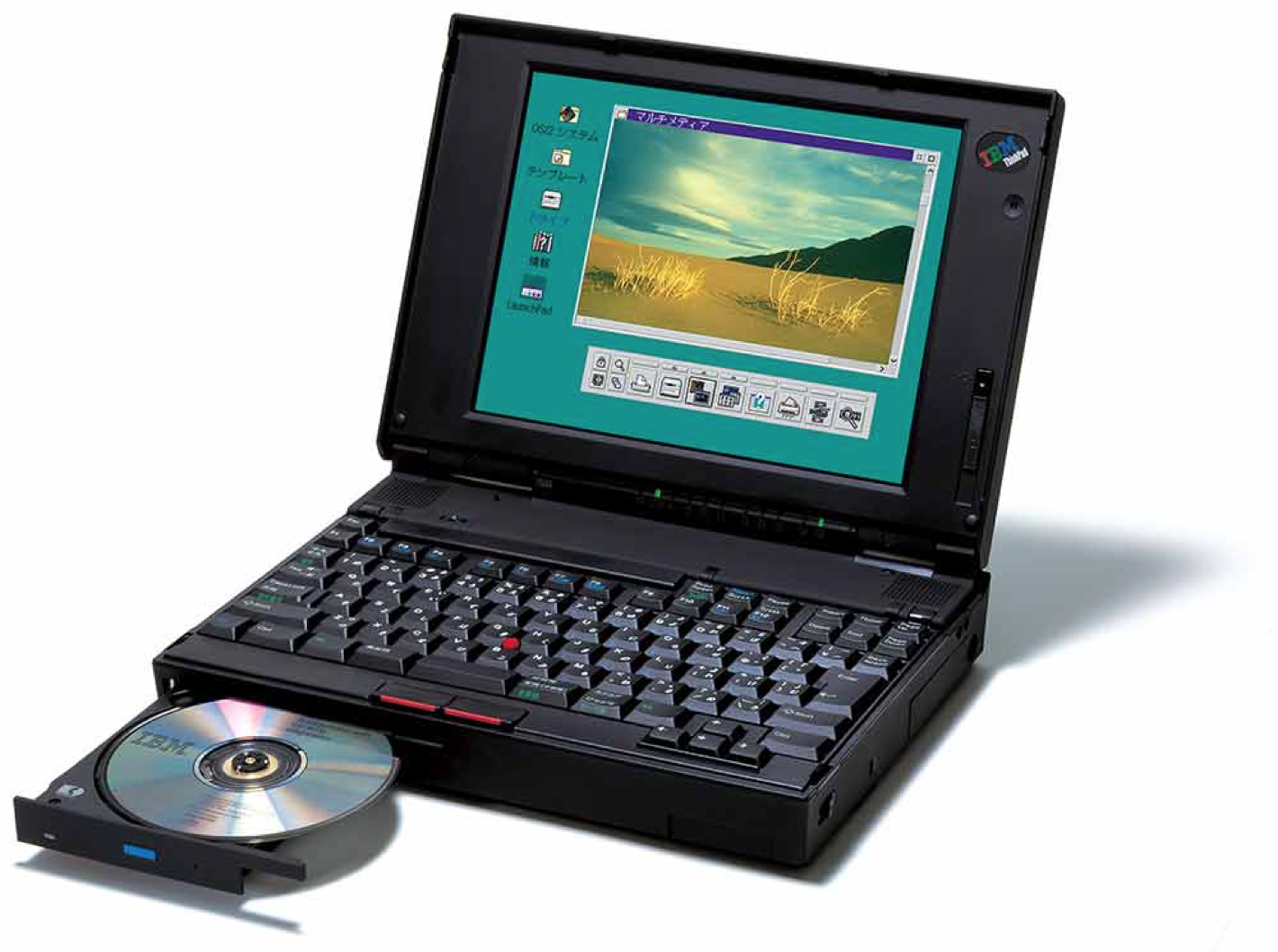Even among technology users far from the world, the appearance of CDs and DVDs evokes a feeling of nostalgia and memories of hundreds of favorite songs and entire seasons of the series “Friends”, which they themselves recorded “for collection”. At one time, these media have changed our approach to viewing and listening to multimedia content, but this is not their main contribution to culture. Compact discs have completely changed the system of information storage and transmission in the world. And back in the distant 90s, the ThinkPad development team anticipated this important cultural shift and launched the first laptops with built-in CD and DVD drives. In the midst of a multimedia revolution, the ThinkPad development team released the first laptop with an integrated CD drive.

Now computers can store entire terabytes of data, so it’s hard for us to imagine times when hard disk space was tightly limited. And it is even more difficult to do this because of flash drives and cloud services, with which it has become much easier to share information. But not so long ago, such technologies existed only in science fiction novels and films.
Old-fashioned punched cards and magnetic tape were at the origin of data storage systems, and until the first hard drives appeared in 1956, they were the only way to save information somehow. Over time, the hard drives became smaller, and the data on them fit more, but they still remained expensive, cumbersome, and very inconvenient for transportation.
Then, in 1971, the first floppy disks appeared. Now even a three-minute song in MP3 format will not fit on a floppy disk, but at that time they became a real breakthrough. PC owners stored their data on them, and developers often used floppy disks to distribute software and games. Over time, programs and user files began to take up more and more space, so it's time for a new innovation. And she turned out to be CD- and DVD-drives and discs.
CDs first appeared on the market in 1982 and became a symbol of the transition of the music industry from analog to digital media. Two years later, there appeared CD-drives with the ability to record and it turned out that now it is possible to transfer and record much larger amounts of data and large applications without problems. A classic example of such a qualitative leap was the electronic Grolier Electronic Encyclopedia. 9 million words of this version of the popular encyclopedia took up only 12% of the space on the CD.
In the midst of a multimedia revolution, the ThinkPad development team released the first laptop with an integrated CD drive. The ThinkPad 755CD appeared on the market in 1994, and in a place with it, users finally had access to large multimedia files, wherever they needed them. Just one year later, DVDs made it possible to save films and entire series in high quality, although the dimensions of the drives and drives themselves did not change. And almost immediately, the ThinkPad developers made their move: in 1997, the world's first laptop with a built-in DVD-drive, the ThinkPad 770, came out.

In the business sphere, free access to large volumes of multimedia data also produced an indelible effect. The binding to the internal network of the enterprise disappeared and the need to carry with them bulky external CD or DVD drives, so managers, field managers and all users who needed constant access to large amounts of data sighed much more freely. Now all they needed to work with multimedia files was a laptop with integrated drive and virtually any project could be completed with a cup of coffee at the airport. In addition, large-scale presentations with multimedia content could be shown to clients directly on the ground, and not just in the company's conference room.

With the help of ThinkPad laptops, it has become much easier for users and organizations to store and transfer large amounts of data. You could even say that ThinkPad helped set completely new standards for the “mobility” of information. The Lenovo development team continues to evolve with the industry and the culture of modern PCs, but it always remains on guard of the interests of users and is always ready for new great ideas.
Lenovo competition
For 25 years, ThinkPad has helped people from all over the world make great discoveries.
Tell us about your business process optimization project and what results it has brought, and get the chance to win a Lenovo ThinkPad notebook.